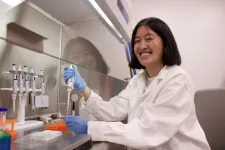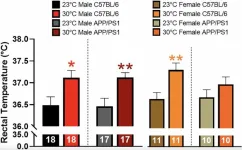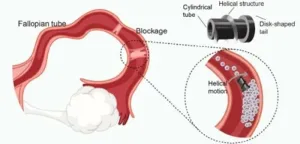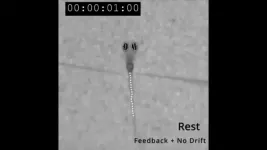(Press-News.org) UNIVERSITY PARK, Pa. — Childhood circumstances, such as parental divorce or growing up poor, have been shown to influence health and other outcomes later in life. But does a person’s experiences in childhood also influence their future ability to provide financial support to their children?
According to a new study from a researcher from Penn State, parents who endured difficult childhoods provided less financial support to their children’s education such as college tuition compared to parents who experienced few or no disadvantages. Regardless of current socioeconomic status, the parents who had more disadvantages in their childhoods gave their children $2,200 less, on average. Even though they still financially contributed to their children’s education, the smaller amount suggests that intergenerational monetary exchanges could influence the next generation’s success, according to the study author, Kent Cheng.
The findings were published in the Journal of Marriage and Family.
“Inequality can often start in the household through the exchange of resources within families,” said Cheng, postdoctoral scholar in the Center for Healthy Aging at Penn State. “This work sheds light on how disadvantage is perpetuated across generations and intersects with broader societal divides, such as between those individuals with and without a bachelor’s degree — a divide that increasingly shapes American life.”
Previous studies have found that adverse experiences during childhood can have a negative influence on health and socioeconomic status during adulthood including cardiovascular health, mortality, labor market outcomes and educational attainment. However, Cheng said, most studies focus on the individual — how their early life experiences affect their life outcomes.
“We know that my childhood shapes my own life trajectory, but does it affect my descendants’ life trajectories? That’s the puzzle I was trying to uncover,” Cheng said.
This study examines family-level outcomes. It is one of the first to evaluate the relationship between parents’ childhood experiences and whether they provide large transfers of money later in life to their own children for education and other purposes and how much they provide. However, Cheng explained, the study does not analyze motivation or willingness to financially support the children’s educational needs — rather, it focuses on if money transfers take place, what discrepancies may appear based on the parents’ childhoods and if parents’ current socioeconomic status matters.
Cheng used data from the Panel Study of Income Dynamics (PSID), a nationally representative sample and longest-running longitudinal household survey that began in 1968. It collects information from respondents and their descendants on employment, income, health, education and other topics.
Specifically, he used data from the Rosters and Transfers module of the PSID, which was conducted in 2013 and gathered information on intergenerational money transfers and is the latest available collection of such data. He merged this information with data from the Childhood Retrospective Circumstances Study on the same respondents. The Childhood Retrospective Circumstances Study is another PSID module, conducted in 2014, that collected data on the economic, psychosocial, environmental and health domains of early life such as parent/guardian relationship quality and history, neighborhood quality and safety, parent and family financial status, school experiences and health.
Cheng constructed a childhood disadvantage score, based on 13 factors. Respondents were then given a score based on the number of childhood disadvantages they experienced, from zero to four or more. He found that parents who experienced more disadvantages during their childhood were less likely to provide financial support to their children for educational purposes and those that do tend to give less money.
For instance, parents with four or more disadvantages gave an average of $2,200 less compared to those with no disadvantages, approximately $4,600 versus $6,800 respectively. When considered in light of the average cost of attending college in 2013, the year data was collected, parents with greater childhood disadvantages were able to shoulder roughly 23% of a year’s cost of attending college for their children whereas parents with no childhood disadvantages were able to cover 34% of their child’s annual college attendance costs.
What’s more, the relationships remained even when controlling for parents’ current socioeconomic status or wealth. In other words, parents who grew up in worse financial circumstances still gave less money for their children’s education even if their socioeconomic status is now higher.
“This particular outcome shows that childhood really does leave an indelible mark on one’s ability to provide money to their kids later in life, even if you eventually become successful in midlife,” Cheng said.
With the cost of college education becoming increasingly expensive, Cheng said that understanding the factors that may keep people from pursuing higher education is critical, especially as American society is stratified not only by race but by educational attainment.
“If you have parents who are able to give you some money, so you don’t have to take out loans for college, you’re at an advantage,” Cheng said. “We’re seeing that the inequities are passed on to the next generation in the form of a parent not being able to give as much money to their children.”
Funding from the National Institute on Aging supported this work.
END
Parents’ childhood predicts future financial support for children’s education
Parents who endured difficult childhoods gave an average of $2,200 less for their children’s college education than those raised in more privileged circumstances
2024-12-17
ELSE PRESS RELEASES FROM THIS DATE:
SFU study sheds new light on what causes long-term disability after a stroke and offers new path toward possible treatment
2024-12-17
A recent study from Simon Fraser University researchers has revealed how an overlooked type of indirect brain damage contributes to ongoing disability after a stroke.
The paper, published in Proceedings of the National Academy of Sciences, shows how the thalamus – a sort of central networking hub that regulates functions such as language, memory, attention and movement – is affected months or years after a person has experienced a stroke, even though it was not directly damaged itself. The findings may lead to new therapies that could reduce the burden of chronic stroke, which remains one of the leading causes of disability in the world.
“Our ...
More calories – more consumption: Individuals with and without obesity both prefer high-calories food
2024-12-17
Higher calorie foods were preferred among individuals with and without obesity despite similar taste and texture, according to a study published December 17th in the open-access journal PLOS Biology by Albino Oliveira-Maia from the Champalimaud Foundation, Portugal, and colleagues.
Eating sends signals to the brain with information about a food’s energy content, which can influence food preferences irrespective of flavor. People with obesity often have impairments in areas of the brain where dopamine ...
Astrophysics: Mystery of the ‘missing’ binary stars solved
2024-12-17
An international team of researchers led by PD Dr Florian Peißker has found the first binary star in the immediate vicinity of the supermassive black hole Sgr A* (Sagittarius A star) at the centre of our galaxy. Although it is known that most stars in the universe do not form alone, so far there are only five confirmed binary stars at a greater distance from the black hole. None of the systems are so close. The researchers assume that the binary star system they found, named D9, will merge into a single star in the near future. The discovery was published in Nature Communications under the title ‘A binary ...
Peptide-guided nanoparticles deliver mRNA to neurons
2024-12-17
Penn Engineers have modified lipid nanoparticles (LNPs) — the revolutionary technology behind the COVID-19 mRNA vaccines — to not only cross the blood-brain barrier (BBB) but also to target specific types of cells, including neurons. This breakthrough marks a significant step toward potential next-generation treatments for neurological diseases like Alzheimer’s and Parkinson’s.
In a new paper in Nano Letters, the researchers demonstrate how peptides — short strings of amino ...
Sexual dimorphism in thermotherapy responses in APP/PS1 mice
2024-12-17
“Passive thermotherapy positively modulates multiple physiological parameters and represents a nonpharmacological approach for potential disease modifying treatment.”
BUFFALO, NY- December 17, 2024 – A new research paper was published in Aging (listed by MEDLINE/PubMed as “Aging (Albany NY)” and “Aging-US” by Web of Science) Volume 16, Issue 21 on November 29, 2024, entitled, “Thermotherapy has sexually dimorphic responses in APP/PS1 mice.”
Researchers Samuel A. McFadden, Mackenzie R. Peck, Lindsey N. Sime, MaKayla F. Cox, Erol D. Ikiz, Caleigh A. Findley, ...
First ever binary star found near our galaxy’s supermassive black hole
2024-12-17
An international team of researchers has detected a binary star orbiting close to Sagittarius A*, the supermassive black hole at the centre of our galaxy. It is the first time a stellar pair has been found in the vicinity of a supermassive black hole. The discovery, based on data collected by the European Southern Observatory’s Very Large Telescope (ESO’s VLT), helps us understand how stars survive in environments with extreme gravity, and could pave the way for the detection of planets close to Sagittarius A*.
“Black holes are not as destructive as we thought,” says Florian Peißker, a researcher at the University of Cologne, Germany, and lead author of the ...
Training solar panels to dance with the wind
2024-12-17
WASHINGTON, Dec. 17, 2024 – Solar power is currently the fastest growing energy sector worldwide. Solar photovoltaic power plants convert sunlight into electricity and their vast potential for producing clean, renewable energy make solar power a cornerstone of the NetZero Emissions by 2050 initiative, which seeks to cut carbon dioxide emissions to zero by the year 2050.
Wind has both positive and negative effects on solar power grids. It helps maintain solar panel performance by eliminating the buildup of dirt and dust, and ...
Tiny robots, big impact: Revolutionizing infertility treatment with magnetic microrobots
2024-12-17
WASHINGTON, Dec. 17, 2024 — Infertility affects an estimated 186 million people worldwide, with fallopian tube obstruction contributing to 11%-67% of female infertility cases. In AIP Advances, from AIP Publishing, researchers at the SIAT Magnetic Soft Microrobots Lab have developed an innovative solution using a magnetically driven robotic microscrew to treat fallopian tube blockages.
“This new technology offers a potentially less invasive alternative to the traditional surgical methods currently used to clear tubal obstructions, which often involve ...
City of Hope scientists uncover protein that helps cancer cells dodge CAR T cell therapy
2024-12-17
LOS ANGELES — Scientists at City of Hope®, one of the largest and most advanced cancer research and treatment organizations in the U.S. with its National Medical Center named top 5 in the nation for cancer by U.S. News & World Report, have collared a tricky culprit that helps cancer cells evade CAR T cell therapy.
CAR T cell therapy harnesses the immune system to seek out and kill tumor cells. This treatment is used in certain types of leukemia and lymphoma — blood cancers. Some wily cancer cells, however, have learned how to hide from the immune system to avoid destruction. The study published today in the journal Cell could lead to more personalized therapies that ...
Discouraged zebrafish help reveal how ketamine works in the brain
2024-12-17
The decades-old anesthetic ketamine could be a game changer for treating severe depression, but there are still many questions about how the drug works, including exactly how it affects the brain’s cells and circuits.
To help answer these questions, researchers are turning to an unlikely animal: tiny, days-old zebrafish.
The millimeters-long, translucent zebrafish may not get depressed exactly like humans do, but the fish do exhibit a “giving up” behavior: they stop swimming after they realize they aren’t getting anywhere – a passive behavior that scientists use to study ...
LAST 30 PRESS RELEASES:
Making lighter work of calculating fluid and heat flow
Normalizing blood sugar can halve heart attack risk
Lowering blood sugar cuts heart attack risk in people with prediabetes
Study links genetic variants to risk of blinding eye disease in premature infants
Non-opioid ‘pain sponge’ therapy halts cartilage degeneration and relieves chronic pain
AI can pick up cultural values by mimicking how kids learn
China’s ecological redlines offer fast track to 30 x 30 global conservation goal
Invisible indoor threats: emerging household contaminants and their growing risks to human health
Adding antibody treatment to chemo boosts outcomes for children with rare cancer
Germline pathogenic variants among women without a history of breast cancer
Tanning beds triple melanoma risk, potentially causing broad DNA damage
Unique bond identified as key to viral infection speed
Indoor tanning makes youthful skin much older on a genetic level
Mouse model sheds new light on the causes and potential solutions to human GI problems linked to muscular dystrophy
The Journal of Nuclear Medicine ahead-of-print tip sheet: December 12, 2025
Smarter tools for peering into the microscopic world
Applications open for funding to conduct research in the Kinsey Institute archives
Global measure underestimates the severity of food insecurity
Child survivors of critical illness are missing out on timely follow up care
Risk-based vs annual breast cancer screening / the WISDOM randomized clinical trial
University of Toronto launches Electric Vehicle Innovation Ontario to accelerate advanced EV technologies and build Canada’s innovation advantage
Early relapse predicts poor outcomes in aggressive blood cancer
American College of Lifestyle Medicine applauds two CMS models aligned with lifestyle medicine practice and reimbursement
Clinical trial finds cannabis use not a barrier to quitting nicotine vaping
Supplemental nutrition assistance program policies and food insecurity
Switching immune cells to “night mode” could limit damage after a heart attack, study suggests
URI-based Global RIghts Project report spotlights continued troubling trends in worldwide inhumane treatment
Neutrophils are less aggressive at night, explaining why nighttime heart attacks cause less damage than daytime events
Menopausal hormone therapy may not pose breast cancer risk for women with BRCA mutations
Mobile health tool may improve quality of life for adolescent and young adult breast cancer survivors
[Press-News.org] Parents’ childhood predicts future financial support for children’s educationParents who endured difficult childhoods gave an average of $2,200 less for their children’s college education than those raised in more privileged circumstances







